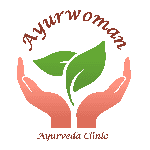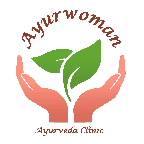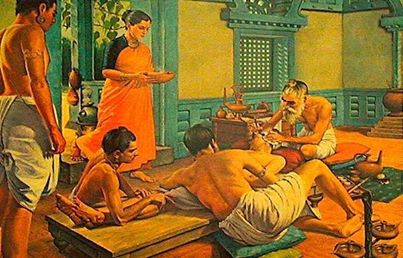Ayurvedic Treatments
Ayurvedic treatment or Ayurveda therapy is only one part of the ayurvedic remedy or ayurvedic healing universe. Ayurveda believes disease are caused by imbalance of the three doshas. Read more about doshas here. Ayurvedic diagnosis and treatments revolve around accurate identification of doshas involved. Experienced ayurvedic practitioners resort to quantifying the qualitative levels of dosha based on their experience.
When you visit your ayurvedic practitioner, they will use various methods to diagnose your illness. This is done by determining your dosha composition and also the dosha or the doshas that are contributing to your illness. Thus Ayurvedic Treatments don’t look at just the disease but also the individual. This Ayurvedic principle is known in Ayurveda as Rogi-Roga Pareeksha. Practitioner then proceeds with a tailored treatment plan involving medicines, treatments, diet and changes to lifestyle.
Ayurvedic treatment classifications:
Theory of Ayurvedic treatments is based on disease management in an ayurvedic way.
They are:
- Cleansing ( Shodana treatment )
- Palliation ( Shamana treatment )
- Rejuvenation ( Rasayana treatment )
- Mental Hygiene ( Satvajaya treatment )
The above broad areas are accomplished by one or many from the list of therapies discussed below.
Abhyanga
Abhyanga is full body ayurvedic oil massage. Abhyanga is done in seven theoretical steps. Ayurvedic oils used for Ahyanga are precise and based on individual’s body type and the dosha involvement for a specific condition.
Abhyanga is a very popular DIY treatment that can be done at home. This is usually termed self-abhyanga and choice of oil is based on your body type.
Udwarthanam
Udwarthanam comes under massage therapy. Herbal powder with special healing properties are used for this treatment.
This procedure is helpful in removing excess fat deposition in the subcutaneous tissue. Udwarthanam may also strengthen and tone up muscles and removes cellulite. This therapy may also be beneficial in managing motor neuron diseases.
Pinda swedam
This particular type of Ayurvedic therapy is a forced sudation by heated boluses filled with a course powder of various grains and pulses or herbs, either cooked or uncooked for the purpose. Ingredient selection is based on individual’s dosha combination and the health issue involved. Boluses are generally prepared by putting the herbs on pieces of linen or cloth and then tying them up into small bundles that can easily be held in the palm. This treatment is generally done to a particular part of the body or to a limb.
Pathra potala swedam
Pathrapodala swedamis a variety of sudation performed with the help of heated bolus bags filled with the cuttings of fresh leaves of certain medicinal plants duly prepared for the purpose. Massage with this bolus is particularly beneficial for pain in the lumbar region, stiffness of the joints, muscular cramps, loss of sense of touch, paralysis of the limbs and similar rheumatic complaints.
Njavara rice treatment or Shastika pinda sweda is one of the special forms of ayurvedic treatment very common amongst Ayurvedic practitioners who belong to Kerala school of thought. This type of pinda sweda is suggested for all types of diseases of the nervous system, chronic rheumatism, pain in the joints, emaciation of limbs and diseases borne out of vitiated blood. This treatment makes body strong and sturdy with well-developed musculature. It maintains the metabolism in a healthy condition.
Pichu
Cotton pad dipped in warm oil applied the affected area. This can be done on cervical, lumbar, knee, and in vertex of head. Very effective for cervical spondylitis and lumbar spondylitis, knee joint pain and stiffness, sports injury, insomnia, head ache, stress and anxiety.
Dhara
The word dhara roughly equates to fountain. Dhara treatment is pouring medicated liquid of medicated oil on body part which needs treatment. Shirodhara is a dhara on head while Sarvanga Dhara is a dhara on full body.
Shirodhara
Shirodhara cures premature grey hair, fatigue, headache, lack of vitality, diseases of the eyes, nose, throat and ears and nervous disorders. This dhara also alleviates the derangement of the three doshas and improves the power of all sensory organs.
Vasthi
There are different types of Vasthi treatments. These are specific to the illness. Some of the most well known vasthi treatments are described below.
Kati vasthi
Kati vasthi is the procedure in which medicated warm oil is kept over the lower back with herbal paste boundary. This treatment is very beneficial for low back pain, sciatica and other spinal disorders.
Sneha Vasthi
Snehavasthi removes toxins from the colon. Very effective disorders like constipation, paralysis, gas and bloating, back ache, rheumatism and neurological conditions. Oil enema with very small amount of therapeutic oil or therapeutic ghee selecting according to the disease condition.
Kashaya Vasthi
Kashaya vasthi can be done after the sneha vasthi. It is the main therapy for vata conditions. They are the ayurvedic treatments of choice for chronic conditions such as arthritis, sciatica and infertility.
Ayurvedic Treatments Melbourne
Intention of this article has been to give a broad perspective on various commonly used ayurvedic treatments. Your ayurvedic practitioner may chose one or many in conjunction with ayurvedic medicines to treat your illness. Some of these treatments such as abhyanga and nasya have been performed by individuals for generations in Indian families as a matter of daily routine. However, please don’t approach Ayurveda as a DIY science and please consult your ayurvedic practitioner for further advice.
If you have a specific question on any of the above described treatments, please do contact us with your query.


